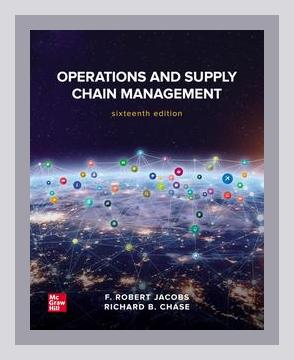Operations and Supply Chain ManagementService Operations
Operations and Supply Chain Strategy: Concepts, Tools and Applications by Alexandre Oliveira and Anne Gimeno (2016)
Introduction to Operations and Supply Chain Strategy
The book “Operations and Supply Chain Strategy: Concepts, Tools and Applications” by Alexandre Oliveira and Anne Gimeno provides a comprehensive guide to understanding and implementing effective operations and supply chain strategies in modern businesses. It addresses various concepts, tools, and applications critical for both service and manufacturing sectors, with significant emphasis on service operations.
Key Concepts of Supply Chain and Operations Strategy
- Defining Operations Strategy
- Example: The alignment of an organization’s operations with its corporate strategy. For instance, a fast-food chain like McDonald’s focuses on consistent quality and quick service.
-
Action: Align department objectives with the company’s overarching goals to ensure coherence across all levels of operation.
-
Strategic Fit Between Supply Chain Capabilities and Competitive Strategy
- Example: Zara’s ability to quickly respond to fashion trends through a responsive supply chain.
-
Action: Evaluate the current supply chain capabilities and adjust them to match the competitive strategy, such as enhancing flexibility for fast-changing markets.
-
Global Supply Chain Strategy
- Example: Apple’s global sourcing enables it to leverage different geographical advantages for cost and quality.
- Action: Develop supplier relationships in various regions to reduce risk and utilize diverse market strengths.
Tools and Techniques for Optimizing Operations
- Process Mapping and Analysis
- Example: Using process flow charts to identify inefficiencies in a call center operation.
-
Action: Implement process mapping workshops to visualize and streamline workflows.
-
Lean Principles and Six Sigma
- Example: Toyota Production System uses lean principles to minimize waste and maximize value.
-
Action: Train staff in lean methodologies and prioritize continuous improvement initiatives to eliminate inefficiencies.
-
Inventory Management Techniques
- Example: Just-In-Time (JIT) inventory used by Dell to reduce holding costs.
- Action: Implement JIT practices to minimize inventory levels and reduce waste, but ensure reliable supplier performance to avoid stockouts.
Applications and Case Studies
- Service Operations Management
- Example: Southwest Airlines uses quick turnaround times to maximize aircraft utilization.
-
Action: Apply service blueprints to identify bottlenecks in service delivery and improve efficiency.
-
Customer Relationship and Demand Management
- Example: Amazon’s use of sophisticated algorithms to forecast customer demand and manage inventory.
-
Action: Invest in data analytics tools to better understand and predict customer needs for more responsive supply chain planning.
-
Supplier Relationship Management
- Example: Procter & Gamble collaborates closely with its suppliers for innovation and efficiency.
- Action: Develop strategic partnerships with key suppliers and foster collaboration to drive mutual benefits.
Strategic Planning and Execution
-
Strategic Planning Cycle
- Example: Nike’s periodic review and adaptation of its global supply chain strategy.
- Action: Conduct regular strategic planning sessions to review performance, set new objectives, and implement necessary adjustments.
-
Risk Management
- Example: Toyota’s diversified supplier base to mitigate the risk of supply disruption.
- Action: Develop a risk management plan that includes diversifying suppliers and creating contingency plans for disruptions.
-
Sustainability and Corporate Social Responsibility (CSR)
- Example: Patagonia’s emphasis on sustainable supply chains and ethical sourcing.
- Action: Integrate sustainability goals into supply chain strategy and work with suppliers to adhere to CSR commitments.
Implementation and Performance Measurement
-
Balanced Scorecard Approach
- Example: Using balanced scorecards to measure performance across financial, customer, internal processes, and learning and growth perspectives.
- Action: Adopt a balanced scorecard framework to align business activities with the vision and strategy, and measure organizational performance comprehensively.
-
Benchmarking
- Example: Benchmarking logistics practices against industry leaders like UPS.
- Action: Identify and compare against best practices in the industry to set performance targets and drive improvements.
-
Technology Integration
- Example: Walmart’s integration of RFID technology for real-time inventory tracking.
- Action: Invest in advanced technologies such as RFID, IoT, and AI for enhanced visibility and efficiency in supply chain operations.
Conclusion
The book “Operations and Supply Chain Strategy” by Alexandre Oliveira and Anne Gimeno offers a detailed roadmap for companies to strategically manage their operations and supply chains. By aligning strategy with operations, leveraging global supply chain capabilities, implementing lean and Six Sigma principles, and focusing on risk management, sustainability, and technology, businesses can achieve significant competitive advantages. Practical tools and real-world examples provide actionable insights for professionals looking to optimize their operations and supply chain performance.
